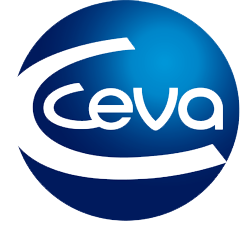
DESCRIPTION
ULTIFENDTM IBD ND contains a genetically engineered Marek’s disease vaccine of serotype 3 (turkey herpesvirus or HVT ) expressing infectious bursal disease and Newcastle disease key protective antigens. The Marek’s disease vaccine containing serotype 3 is presented in a frozen cell associated form. The cells and virus particles are very fragile and require careful handling to prevent damage or loss of titer in order to achieve optimum efficacy. The vaccine is stored and shipped in frozen form in liquid nitrogen.
STORAGE CONDITIONS
Vaccine ampules: Store in liquid nitrogen
Diluent: Store at room temperature between 68 - 77°F (20 - 25°C)
INDICATIONS
This product has been shown to be effective for the vaccination of healthy embryonated chicken eggs 18 to 19 days of age and healthy chickens 1 day of age or older against standard bursal disease, Newcastle disease and Marek’s disease. For more information regarding efficacy and safety data, see productdata.aphis.usda.gov. Good management practices are recommended to reduce exposure to bursal disease virus, Newcastle disease virus and Marek’s disease virus for at least 2 weeks following vaccination.
PREPARATION AND ADMINISTRATION OF VACCINE
Carefully read the directions before use. The instructions must be completely followed. Match the vaccine dose size to the proper diluent size and route of administration as follows:
1. For subcutaneous injection of day-old chicks: Mix 200 ml of
diluent for each 1000 doses of vaccine.
2. For in ovo vaccination of 18- to 19-day-old chicken embryos:
Mix 100 ml of diluent for each 1000 doses of vaccine to
administer 0.1 ml per chicken embryo or mix 50 ml for
each 1000 doses of vaccine to administer 0.05 ml per
chicken embryo.
VACCINE PREPARATION
1. Be familiar with all safety and precautionary measures for
handling liquid nitrogen to prevent personal injury.
2. Wear gloves, a plastic face shield, and protective goggles
before removing vaccine ampules from the liquid nitrogen.
3. Check the container to confirm a sufficient amount of liquid
nitrogen is present to keep the vaccine frozen. If thawed,
do not use the vaccine. The containers (Dewars) must be
checked regularly for liquid nitrogen level and must be
refilled as needed.
4. After matching the dose size of the vaccine with the diluent
size, quickly remove the exact number of ampules needed.
5. A maximum of 3 ampules should be thawed at one time.
After inspecting the diluent and completing all preparations,
the vaccine should be quickly removed from the Dewar and
placed into a clean 80°F (26.5°C) thaw bath. This step can
be repeated until the appropriate dosage has been reached.Gentle agitation during the thawing process promotes
rapid, uniform thawing and evenly distributes the vaccine
in the ampule.
6. Immediately after thawing, mix the vaccine with the diluent
at room temperature (68°-77°F or 20°-25°C). Gently draw
the vaccine from the ampule with an 18-gauge, 1.5 inch
needle and slowly mix with the diluent. Rinse the ampule
one time with the diluted vaccine.
7. Immediately use the vaccine and mix occasionally to
ensure uniform suspension of cells.
SUBCUTANEOUS VACCINATION
1. For subcutaneous injection, sterilize the automatic syringe,
needles and other accessory equipment by autoclaving or
boiling prior to vaccination.
2. Use a short (3/8 inch or 1/2 inch) 20-gauge needle for
vaccination. Subcutaneously inject 0.2 ml into the back of
the neck of each chick.
IN OVO VACCINATION
1. The vaccine is administered in ovo to 18- to 19-dayold
embryonated eggs. Read the egg injection system
operator’s manual before initiating vaccination. Failure to
follow instructions may result in personal injury, excessive
embryonic mortality and low hatchability. Inoculate each
embryo with 1 full dose (0.05 ml or 0.1 ml).
2. Sanitize the egg injection system before and after
use following the procedures described in the
operator’s manual.
NOTICE
This vaccine has been thoroughly tested for safety, purity, potency and sterility and is in compliance with all applicable USDA and Ceva standards.
CAUTION
1. Read the above directions carefully.
2. Do not vaccinate within 21 days before slaughter.
3. The vaccine contains gentamicin and amphotericin B
as preservatives.
4. Inactivate unused contents before disposal.
5. Do not remove vaccine from liquid nitrogen until
ready for use
6. Do not refreeze the vaccine.
7. Use entire contents when first opened.
8. Do not use vaccine that has thawed in the liquid
nitrogen container.
9. Do not overdose or over dilute the vaccine.
10. Do not mix with other products, except as specified
on this label.
11. In case of human exposure, contact a physician.
12. For use in animals only.







